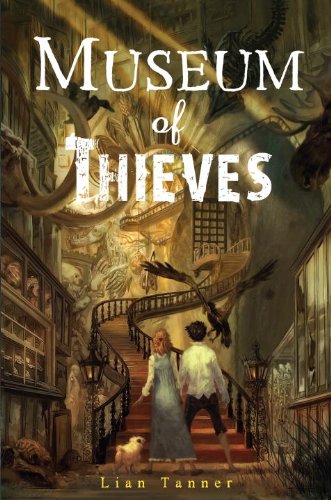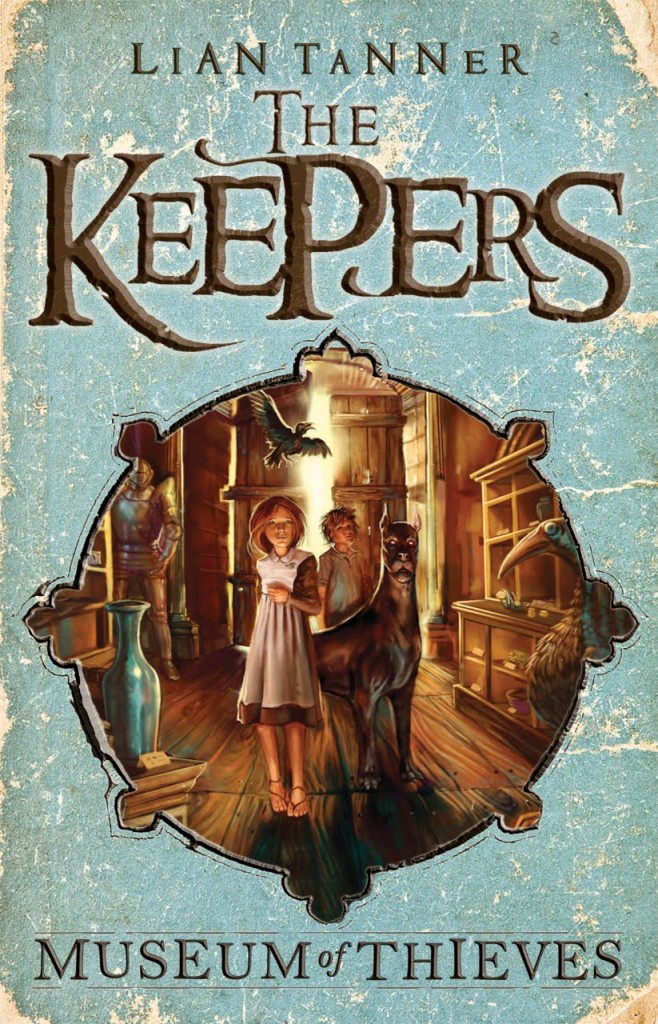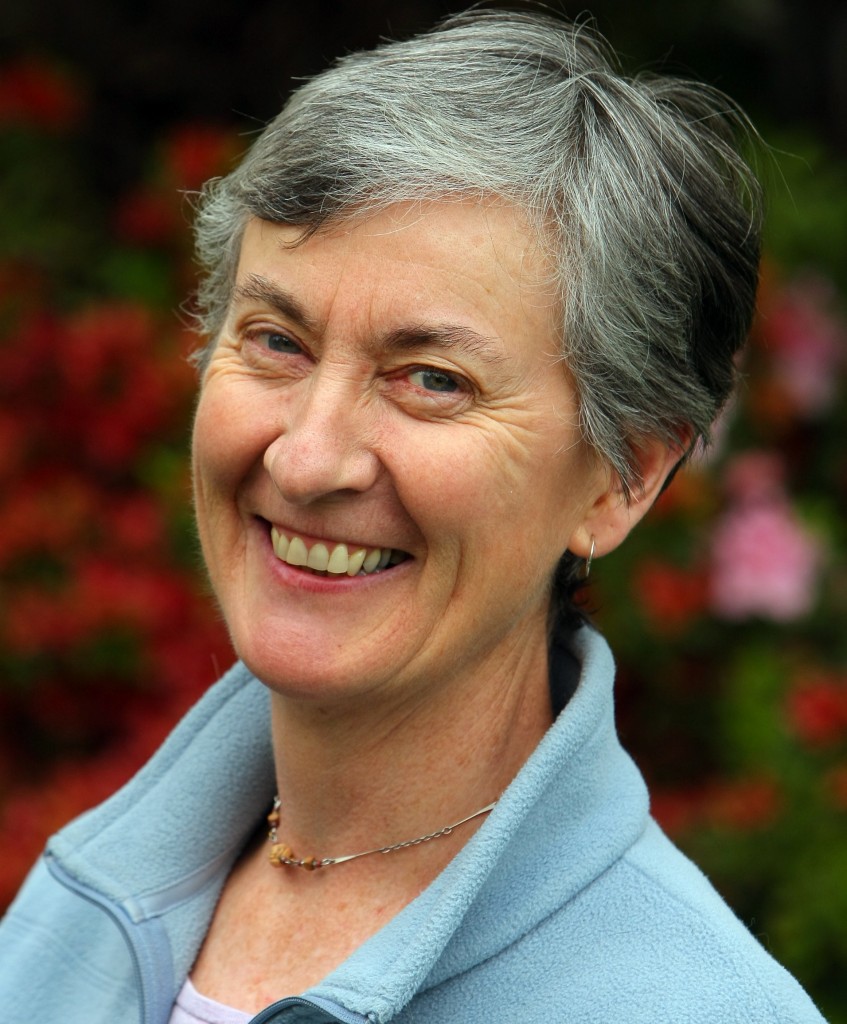Nothing is more exciting than discovering a talented new author, and we’ve found one in Lian Tanner. Her fantastic debut, Museum of Thieves, is a riveting tale of adventure and rebellion, the first in The Keepers trilogy.
Byrt: For the people who haven’t read Museum of Thieves, what type of readers do you think would enjoy your book? Any particular authors you could mention, Amazon recommendation-style (i.e. if you like THIS, you’ll like Museum of Thieves)?
LT: Museum of Thieves is aimed at middle-grade readers who like bold characters, exciting cliff-hangers and high-stakes adventure with a touch of fantasy. If they like Jeanne du Prau, Cornelia Funke, Neil Gaiman and Diana Wynne Jones, there’s a good chance that they’ll like Museum of Thieves.
I say ‘middle-grade’, but I was very pleased with the following review on media-culture.org.au: “A well written, entertaining and witty tale sure to interest young readers and potentially bridge the gap between children’s fiction and adult fiction, as there are broader concepts in the novel that one can only see through mature eyes.”
Byrt: Do you like to haunt museums? Do you have a favorite museum memory?
LT: I love museums! I used to wander around the Hobart and Launceston museums (both in Tasmania) when I was a child. (I still do whenever I get the chance.) I was particularly fascinated by the old convict uniforms, and how small most people were two hundred years ago. And the dunking box, which was used as a punishment for convicts who misbehaved on the trip from England to Tasmania (which was called Van Diemen’s Land back then). The sailors would sling the box over the side of the ship and, as the ship rolled, the convict locked inside the box would go underwater and stay there—with the seawater pouring through the holes—until the ship rolled back the other way. Needless to say, it gave me nightmares!
 Byrt: Were you drawing on the history of any particular place or era for inspiration as you were filling the Museum of Dunt?
Byrt: Were you drawing on the history of any particular place or era for inspiration as you were filling the Museum of Dunt?
LT: I drew a lot of inspiration from nineteenth-century Tasmania—the whaling pots, the mantraps, the rooms called ‘Early Settlers’, ‘The Tench’ and ‘Old Mine Shafts’.
Other parts of the museum were purely figments of my imagination. But there’s a certain similarity to most colonial histories, and Dunt was a colony, with all the adventure and danger and courage and cruelty that seems to go with such places.
Byrt: Is the living history of the Museum and the danger it poses at all a metaphor for the importance of learning from history?
LT: Yes. And not just learning from it, but coming to terms with it. In my experience, if you don’t come to terms with the past, it tends to jump up and bite you when you least expect it. The people of Jewel think they have learned from their past, but really what they have done is retreat from it and become very timid. So it’s actually still controlling everything they do.
The Museum is also about embracing all the different sides of life, the bad as well as the good. It’s something I find extremely hard to do! But as soon as you tuck your head in and try to control things, like the people of Jewel are doing, you lose something important. The Museum might contain danger, but it also contains a great sense of the flow and excitement of life, and it seems that you can’t have one without the other.
Byrt: The bickering between Goldie and Toadspit is one of my favorite parts of your book – do you have siblings, by any chance? Or did your teaching background help you give the bickering such an authentic ring?
LT: I have three older brothers, and the youngest one and I fought constantly as children. (These days we like each other!) As a result, I find the brother/sister relationship really interesting, and wanted to explore it in a number of different ways—Toadspit and Bonnie, the Protector and the Fugleman, and of course Goldie and Toadspit, who are not brother and sister, but act as if they are.
Byrt: I loved what your book had to say about living in a society ruled by fear—did modern day politics play a role in inspiring the City of Jewel?
LT: Not politics so much as the current tendency to over-protect our children—and the way this actually makes them more vulnerable. This wonderful irony was one of the starting points of the novel. I wanted to push it to its ‘natural’ conclusion, where the children were chained for their own protection, and everyone was perpetually frightened.
I wasn’t really thinking about politics at all, not until the book was finished and I read back through it. That’s when I started to notice how relevant it was. I think a lot of this stuff happens subconsciously for a writer—you write it because it’s interesting, and it’s not till later that you realise where it came from.
 Byrt: Is there anything you want readers to take away from your story?
Byrt: Is there anything you want readers to take away from your story?
LT: Firstly just the excitement of a good story. This comes before everything else. But it would be good if the reader was also reminded that children are capable of so much more than is often expected of them.
There’s a line towards the end of the book that says: ‘There had been nothing to test his courage, nothing to teach him when to stand and when to run. Now he was paralysed by fear and indecision.’
For me, this is the crux of the story—the need to learn about the world and how to deal with it. How to face danger courageously, and judge how great that danger is, and measure it against your own strengths so that you know whether to stand or run. It takes practice, this stuff, for all of us!
Byrt: Can you tease a little bit about what’s coming up next in The Keepers trilogy? Do you have other projects on the horizon?
LT: The second book in the trilogy is called City of Lies, and I’ve just finished the copy-edit. The story starts six months after the Great Storm, when Toadspit’s sister Bonnie is snatched off the streets by child-stealers, and Goldie and Toadspit set out to get her back. But along the way Toadspit is also captured, and Goldie ends up alone in the neighbouring city of Spoke, where nothing and no one can be trusted. She’s going to need all her skills as a thief if she is to survive and save her friends!
Now I’m hard at work on the third book, Path of Beasts, and toying with a few different ideas for what I might do when the trilogy is finished.
Byrt: Being an admitted Farscape fan, I can’t help asking – how did Claudia Black get chosen to be the voice of your audiobook?
LT: Wasn’t she a terrific choice! I haven’t heard the whole thing yet, but I’ve listened to the first chapter and she does a wonderful job. Dan Musselman, who produced it for Random House’s Listening Library, told me that he wanted an international voice, something a little foreign to the American audience, but recognisable. He chose Claudia Black, who he had worked with before, because (a) she was brilliant and (b) she was an Australian whose accent had morphed over time into something that was quite intriguing.
Byrt: And lastly, what are you reading right now? Any books you’d recommend?
LT: I’ve just finished a moving and powerful YA book called The Piper’s Son by Melina Marchetta who wrote Looking for Alibrandi. And I’m starting a middle-grade fantasy called The Undrowned Child by Michelle Lovric. It’s set in Venice in 1899, and involves mermaids, sharks and (I haven’t got to this bit yet, but it’s on the back cover) librarians who turn into cats.
I’m also working my way through a list of recommended books that I gathered from librarians and booksellers when I was in the US earlier this year. Through this list I’ve so far discovered Gregor the Overlander and The Hunger Games by Suzanne Collins, and Leviathan by Scott Westerfeld, as well as some terrific books for adults.
One of the things I love is finding book recommendations from my favourite authors. So to repay the favour I’ve put up a list of my favourite books (for children, YA and adults) here.
Thanks again to Lian for stopping by the Bookyurt!
You can find more on Lian and her Keepers series here.
(And you can read our rave review of Museum of Thieves here.)








Lovely book; Museum of Thieves. I love it!